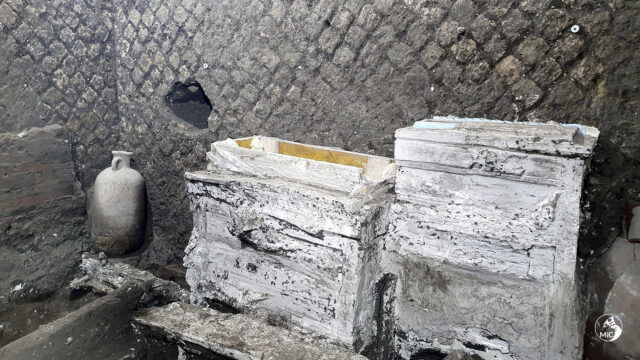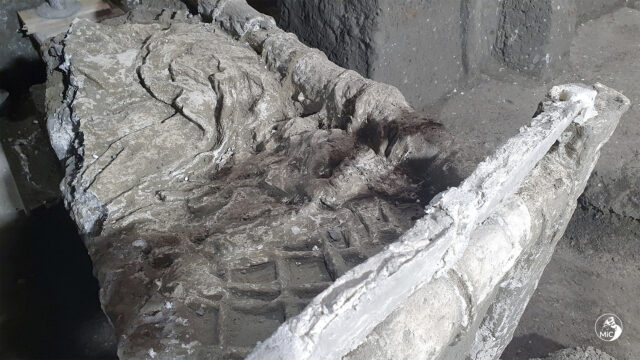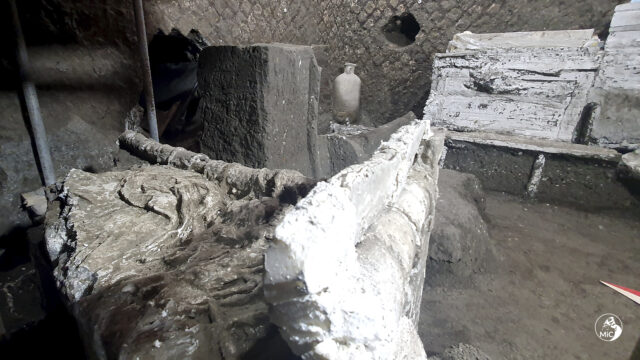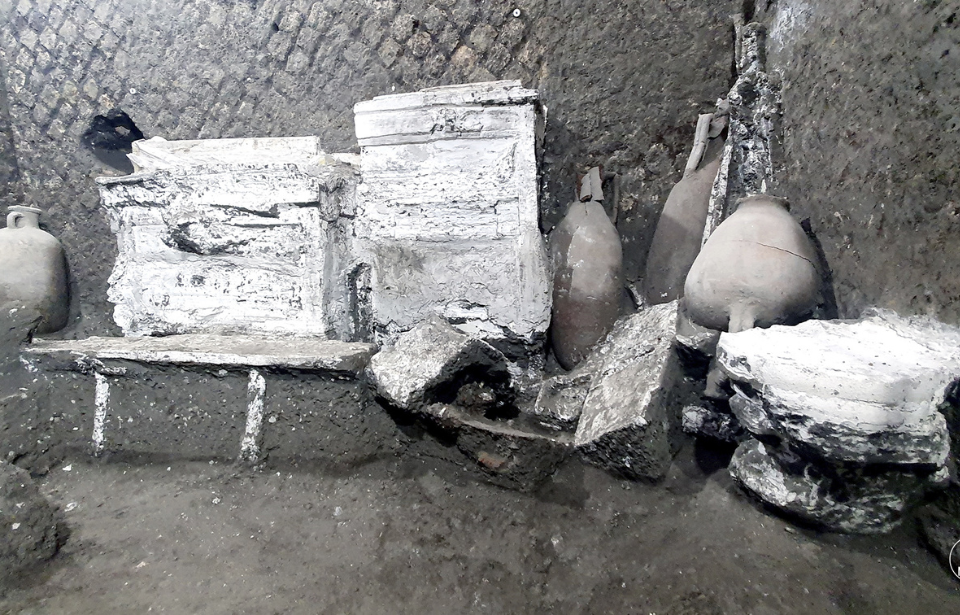The city of Pompeii has always been of extreme intrigue. Still, research into the area has been minimal as a result of not wanting to damage or alter what’s been preserved for millennia. Excavations originally took place between 1907-08, with the site largely left alone until 2017, when it was discovered that illegal diggers were causing damage and plundering the ancient city.
Now, research has seen a huge increase, mainly thanks to a funding boost of a whopping €105 million ($114.4 million USD). The recent discovery of a new room now provides a glimpse into the ancient past – particularly, the lives of slaves in Pompeii – proving this increased funding to be more than beneficial.
A recent discovery in Pompeii

During a dig at the Civita Giuliana villa, located about 600 meters north of the walls of Pompeii, archaeologists discovered a small bedroom that appears to have been used by slaves before the eruption of Mount Vesuvius in 79 AD.
While finding the room – dubbed “room ‘A'” – was a significant achievement, it’s what the team found within that holds more historical significance. Inside were two beds, one with a mattress and the other with a blanket. Of these, it was determined that one had been partially destroyed by a tunnel used by robbers who’d attempted to access a different part of the villa.
Researchers say the differences between the two beds may indicate a hierarchy among the servants and their quarters.
As well, the room also contained two cabinets, as well as several ceramic containers and urns. Within these were the remains of two mice and a rat, which also suggests the state of living conditions for servants at the time. “These details once again underline the conditions of precarity and poor hygiene in which the lower echelons of society lived during that time,” the Italian Culture Ministry said in a statement.
How archaeologists reimagine the remnants of Pompeii

The eruption of Mount Vesuvius coated Pompeii and the surrounding area in layers of ash and pumice, which preserved the site for centuries. However, while the debris remained relatively the same, the organic material beneath decomposed, creating an empty, deflated space.
Archaeologists were able to fill these voids with plaster, which helped reveal the original shapes of the organic materials that otherwise decayed, such as fabrics and furniture.
Gabriel Zuchtriegel, the director of the Archaeologist Park of Pompeii, explained how, “The possibility of making casts, i.e. of filling the voids left in the cinerite of the layer of ash from the eruption of Vesuvius with plaster, has made it possible here to obtain almost a photograph of a room most probably inhabited by servants, by slaves.”
What does the discovery mean?

Some of the more apparent items missing from the room were locks and shackles. Considering this was likely a servants’ quarters, the lack of these items suggests to researchers that there were other ways to maintain the social hierarchy of ancient Rome.
“It seems that control was primarily exerted through the internal organization of servitude, rather than physical barriers and restraints,” Gabriel Zuchtriegel told DW.
More from us: The Famous ‘Terracotta Army’ Was Discovered By Farmers Digging a Well
This find has cemented in the minds of many that there’s more to be discovered in the area and that efforts need to be ramped up. Gennaro Sangiuliano, the Italian Minister of Culture, confirmed this growing need for additional research, saying, “What we are learning about the material conditions and social organization of that era opens up new horizons for historical and archaeological studies.”
